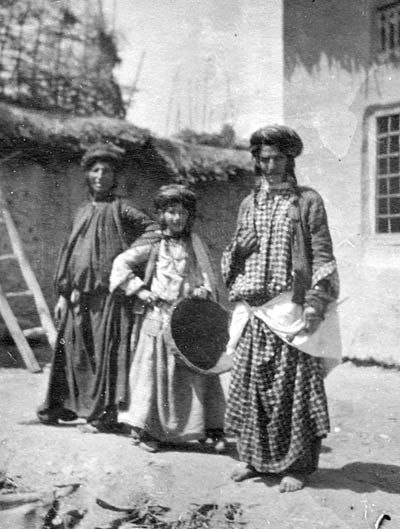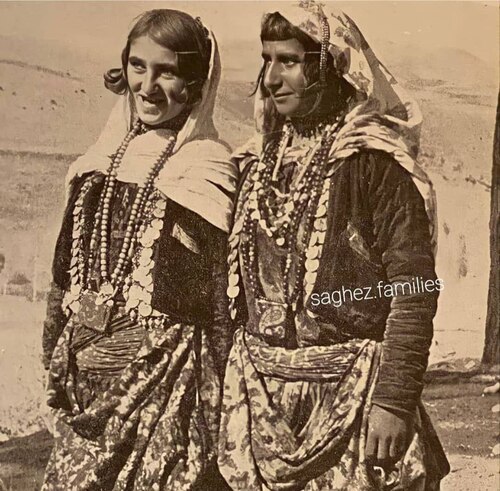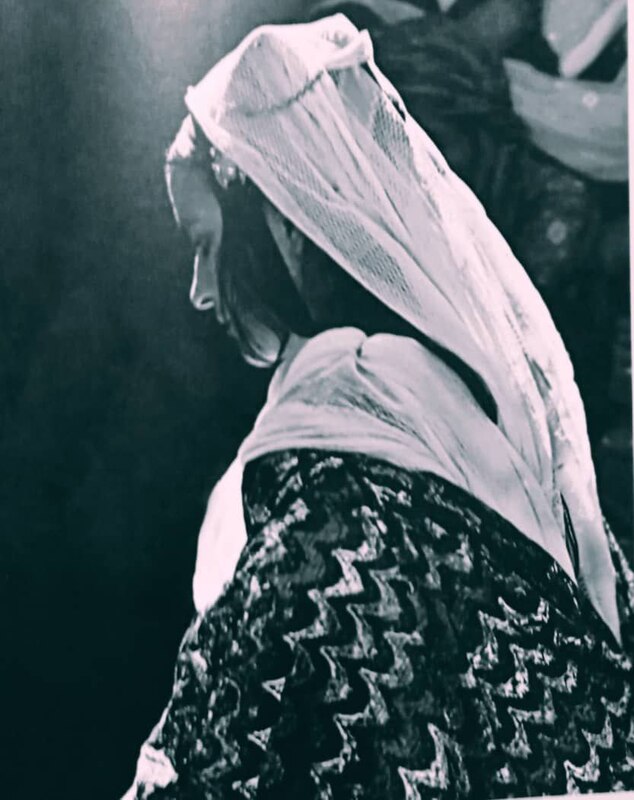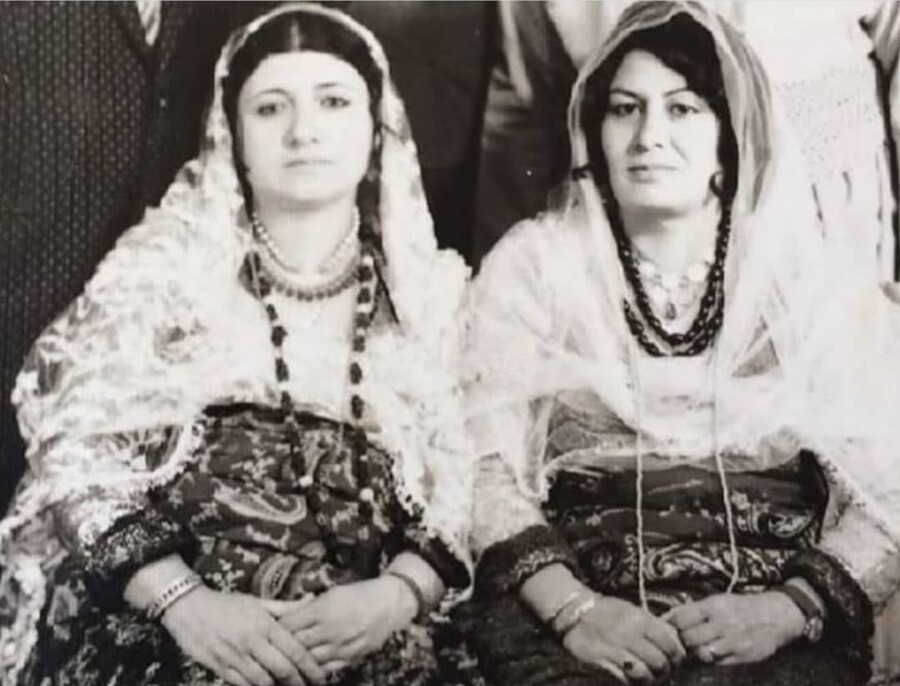Leila Nourani
Clothing takes different forms and models in different societies according to geography, regional and tribal beliefs, customs, religion, and attitudes. Obviously, in Mukriyan, where Islam was the common religion, tribal life was mainly prevalent, and cattle breeding, gardening, and migration were the main occupations, there is a style of clothing for women as a special model that is divided into two main branches. The first one was Sablaghian clothes and the other was Mangurayati.
Due to the Islamic and the dominant male power, women’s clothes, reluctantly though, have been made loose, and it was decorated according to the tase of the ladies. This particular style was the same for the old, youth, and children. If we look at the old photographs, which are our best documents, girls as young as infants wore turbans and mothers sewed clothes for their daughters as they did for themselves, even for their dolls.
It is worth mentioning that at that time, most women sewed their clothes for themselves, which was done by hand. The color of women’s clothes has been changed according to the nature and beauty of the Mukriyan region, the classes of society, and joy and mourning. The colors are generally bright as Kurdistan’s nature. If we look closer, we can find the signs of belief in Kurdish proverbs, idioms, prayers, etc. For instance, “That carpet looks like a red bride” (new and nice) or “Blue scarf” (sadness), etc.
Clothing is the identity of human beings in many places. Mullahs’ wives wear a white scarf, Seyed women (women who are descendants of Prophet Muhammad) and Sheikhs wear shawls and mostly green clothes, brides wear red clothes and red lace robe (that covers the head and face in Kurdish clothes) have been used for girls (virgin) and white lace for widows in their weddings. In this region, the name of fabrics is different based on the dialect and views of women, “The eyes of partridge”, “spotted mountain”, “frost”, “Pomegranate flowers”, “apple flowers”, etc. show that nature has been able to have an impact on people. The second factor is the natural variation in the thinness and thickness of the fabrics used when necessary.
Circumstances and the place from where the fabrics were imported also had a particular effect. The “Meccan scarf” that Hajis (pilgrims of Hajj) often brought as gifts, and the “Saddama zera dress” that came through Garmen (Iraqi Kurdistan) from Arab countries confirm this. Sometimes the language of the joke affects the names like “khasu taqen” dress (the dress that kills the mother-in-law) or “Farmu danisha” dress (please sit down) which shows the beauty of the dress that caused jealousy and impatience. In short, research on the style of clothing and how the people of the world use it, reveals an ancient and authentic history, to the extent that clothing is a national identity, which unfortunately we have not paid enough attention to it as many other things, and did not do academic research on that; however, it is one of the most valuable treasures of Kurdish culture. My efforts are a small part and I wish they have succeeded in saving this part from extinction.
Awdamen dress:
It is the oldest style of Kurdish women’s clothing that is common in all Kurdish regions except Mukriyan. A “Ba haldanawa” that is called “Awdamen”, “Ba kosh”, “Balada krn”, or “Qull” dress is a dress of “Tirezhudar” or “Ba tirezhu” because its skirt was pulled up from the sides and was placed in Pshtwen (a long shawl that covered the waist). Also, the reason for sewing this style was that it was easier for women to do their duties in livestock farming, household chores, and harvesting so that their clothes skirts wouldn’t get dirty due to being too long. They had to be ready at all times because they were farming or wandering about the place, and they were pregnant most of the time, so this dress and sewing was of particular use to them and was used instead of “Bar halbena” (apron).
The dress was 2 or 3 meters longer than the height back and forth. The sewing method was such that the piece was cut into two parts and placed back and forth. It was longer than the Tirezhudar dress by 3 meters.


Bilbasi dress
It’s an old dress that is no longer common.
They made eight to ten meters into a very loose and large dress. Its “Sorani”s (sleeves) were “Anguchk” (very long). For each Sorani, they gave it a piece of one and a half to two yards. The model of the dress was shaped like butterfly wings on the back. As the name suggests, it is typical of the Bilbas region.









